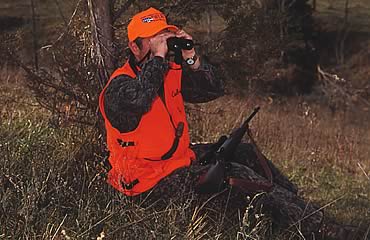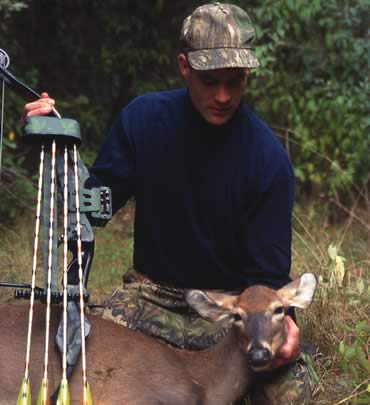Do state-mandated antler restrictions make a positive impact on herd health?
In 1990, Larry Marchinton received a call from a Georgia wildlife biologist who wanted to discuss a novel idea for deer management. At the time, Marchinton was the deer research program leader at the University of Georgia, and the deer-hunting world was starting to look at ways to manage for bigger, older bucks. The idea? A state-mandated, legally enforceable regulation that would make hunters take only bucks with an antler spread of at least 15 inches. Marchinton didn’t need to be convinced. He liked the idea right off the bat, but would hunters?
“We wanted to protect 1 1/2-year-old bucks and possibly some 2 1/2-year-old deer as well, because we thought the potential for producing big deer was there in some counties,” recalled Marchinton, now retired. “We chose Dooly County because quite a few clubs and landowners were already practicing management for quality bucks and because it was in the region where one of the biologists who proposed the idea worked. We held some public meetings and sent out a survey to hunters and landowners in the county to gauge interest.”
Not only did the biologists get positive feedback on their plan, but the survey also found that two-thirds of the respondents were in favor of the idea. After some fieldwork, the rule was enacted in 1993. Three years later, another survey found 90 percent of hunters were in favor of the new regulation.
“Ninety percent support on any regulation is almost unheard of,” Marchinton said. “That really showed us and the rest of the deer-hunting and deer-management communities that there was a tremendous interest in managing for quality bucks.”
 What might have been a groundbreaking experiment then is little more than a common practice today. Almost every state east of the Mississippi, and many west of it, have antler point restrictions, either statewide or in selected regions. Mississippi instituted statewide point restrictions in 1995, Pennsylvania did so in 2002, and Georgia has gone statewide with its restrictions; Michigan recently approved them in the Upper Peninsula. Other states without point restrictions are taking a hard look at them. The reasons vary, but Quality Deer Management Association executive director Brian Murphy said they are becoming popular because hunters are asking for them.
What might have been a groundbreaking experiment then is little more than a common practice today. Almost every state east of the Mississippi, and many west of it, have antler point restrictions, either statewide or in selected regions. Mississippi instituted statewide point restrictions in 1995, Pennsylvania did so in 2002, and Georgia has gone statewide with its restrictions; Michigan recently approved them in the Upper Peninsula. Other states without point restrictions are taking a hard look at them. The reasons vary, but Quality Deer Management Association executive director Brian Murphy said they are becoming popular because hunters are asking for them.
“There has been quite a shift in hunter attitudes about deer management. Biologists are seeing a much higher demand for quality deer hunting opportunities than in years past,” he said. “With deer numbers at record highs, hunters have the luxury of choosing to harvest particular age-classes of deer because they don’t have to shoot the first legal deer that comes along. They know they will have other opportunities.”
Lonnie Hansen, a resource scientist with the Missouri Department of Conservation and head of the state’s deer program, said his agency looked at several options to achieve its goal of knocking down antlerless deer numbers while providing high-quality hunting opportunities. They ultimately settled on a 4-point rule that required hunters to shoot only bucks with four points or more on at least one antler. The rule went into effect in 2004 in 29 counties in northern and central Missouri.
“When we first proposed the options, we put them out to the public. Most hunters favored point restrictions over such ideas as earn-a-buck regulations or a one-buck bag limit. Could those things have had the same effect? Probably, but we wanted to let our hunters decide the best way to achieve our goal of reducing the number of antlerless deer while increasing the age class of our bucks,” he said.
In Pennsylvania, prior to the mandatory point restrictions, yearling bucks made up about 85 percent of the state’s antlered deer harvest. Also, the adult-doe-to-adult-buck ratio was in the neighborhood of 14-to-1, and the ratio of button bucks to antlered bucks was similar. Much of the state’s deer herd was grossly overpopulated, and the resulting damage to the habitat was having an impact not just on the deer herd, but also on a wide variety of game and non-game wildlife. Something had to be done, so the Pennsylvania Game Commission adopted rules that decreased the buck harvest through point restrictions and increased the antlerless harvest through liberal bag limits.
 Do They Work?
Do They Work?
A Pennsylvania radio telemetry study found that about 50 percent of the state’s yearling bucks survive the hunting season; and of those, nearly 90 percent are available the following season. Seventy percent of those 2 1/2-year-old bucks are taken by hunters, but almost all of the remaining 30 percent survive yet another hunting season, offering hunters an honest chance at harvesting a 3 1/2-year-old buck. That was almost unheard of prior to the adoption of the point rules.
“I’ve seen a lot more nice bucks taken by hunters in the past few years,” said Pennsylvania resident Kip Adams, who serves as QDMA’s director of education and outreach. “Prior to the point restrictions, about 20,000 bucks taken statewide were 2 1/2 years or older, but after two years, that number jumped to 60,000.”
Lonnie Hansen said point restrictions have been very successful in Missouri. In fact, the four-year experiment will not only be turned into regulation, it is being expanded to include 65 counties. He said the average age of bucks in counties that weren’t included in the original experiment went up, demonstrating a general desire by hunters to see and harvest older bucks where counting points isn’t mandatory.
Georgia’s deer project leader, Charlie Killmaster, said point restrictions have worked in Georgia, but not necessarily to the extent that some hunters were hoping. He examined statewide harvest data for bucks and found that the number of bucks 3 1/2 years old or older made up about 20 percent of the total harvest in Dooly County. That’s not bad, he said, but other counties actually have higher percentages of 3 1/2-year-old bucks, with some counties as high as 40 percent. That’s largely due to voluntary harvest by hunters, particularly on large farms and plantations with good management plans already in place.
“There really hasn’t been an increase in the number of yearling bucks in the total population since we went to a statewide point restriction, because hunters were already passing up those smaller bucks,” noted Killmaster.
Pennsylvania’s point restrictions, wildly unpopular when they were first proposed by then deer project leader Gary Alt, have also seen a shift in support. According to a recent survey conducted by the PGC, 63 percent of the state’s deer hunters support them.
The Problem with Point Restrictions
Not everyone is a fan of forced point restrictions. The same Pennsylvania survey that showed strong support also found that 22 percent of hunters are still opposed to them. Murphy said the restrictions can result in what biologists call high-grading. Although there is some dispute over the effect of point restrictions, various studies have shown that in areas with heavy hunting pressure, antler point restrictions can lead to older bucks with small antlers.
“By taking virtually all the bucks that meet the requirements of a point restriction, you remove the ones with the best potential for growing larger antlers,” he said. “In many instances, those younger bucks that meet the minimum requirement are the ones that typically produce the largest antlers when they reach their full potential later in life. In areas with heavy hunting pressure, they usually don’t get the chance.”
On private property, or on public land with light hunting pressure, point restrictions produce larger bucks overall, because more yearling bucks that are legal make it to older age classes. Murphy, however, said that has as much to do with selective harvest as it does with mandatory point restrictions. Hunters who have the freedom to choose are more willing to let small bucks walk. That’s exactly why many biologists aren’t supportive of point restrictions, at least not state-mandated ones. Murphy is one of them. He prefers to let hunters decide.
Opponents also suggest that forcing hunters to count tines before they shoot will lead to a decrease in participation by those with limited time or little desire to shoot a trophy-class deer. With hunter numbers falling on their own already, it’s a legitimate concern. Hansen said the number of deer hunters in Missouri is expected to drop by a whopping 100,000 by 2030. Killmaster, however, said Georgia hunters average about 40 years of age, and most are willing to pass up younger bucks anyway.
In order to help increase hunter participation, at least among the under-16 crowd, Missouri officials allow young hunters to take a buck that doesn’t meet the mandatory point restrictions. Many other states are doing the same, and all but nine counties in Georgia allow hunters to take one buck of any size in addition to a second buck that must fall within the mandated point restrictions.
Then there is the worry of an increase in illegal or accidental harvest through ground counting, when a hunter counts points after pulling the trigger. Hansen and Killmaster agreed that shoot-first, count-later might happen occasionally, but it hasn’t been a significant factor. Based on radio-telemetry studies in Pennsylvania, ground-counting hasn’t been an issue in that state, either. The Game Commission accounted for that when they instituted point restrictions by giving hunters an easy, pain-free out when they inadvertently broke the law: Confess, pay a nominal restitution fee of $25, forfeit the deer and keep on hunting.
Like any deer management plan, mandatory point restrictions aren’t the perfect solution to every problem, but they are gaining in popularity, and hunters generally favor them. Murphy sees a day where state wildlife agencies that have point restrictions will actually remove them. He thinks hunters will not only embrace them but also will eventually follow a voluntary point-restriction rule as part of a larger deer management program, making mandatory point restrictions unnecessary.
Read Recent Articles: • No Second Thoughts: Some say taking an albino deer is bad luck, but this hunter didn’t even think twice.
• In Need of an Intervention: Self-confessed deer hunting addict finally gets the trophy of her dreams.
• Big Woods Bucks: Whitetails in large timber tracts are harder to pattern, but it’s not impossible.
This article was published in the October 2008 edition of Buckmasters Whitetail Magazine. Join today to have Buckmasters delivered to your home.